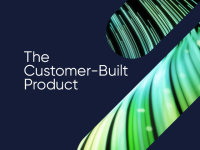What is customer value?
Understand how to define what customer value is for your company, why it's important, and how good customer experience and satisfaction enhances its v...
Solutions
Products
Ingest omnichannel customer interactions, from audio and screens to surveys, for complete visibility and analytics.
AI virtual agents, real-time multilingual translation, and event-based customer feedback drive smarter, personalized CX initiatives.
Customers
Solutions
Products
Customers
Resources
Company
The Team at CallMiner
July 27, 2023


Today’s companies increasingly compete on experience, aiming to create a key differentiator that sets them apart. Product experience (PX) plays a crucial role in the customer journey, directly impacting customer acquisition, retention, and overall customer satisfaction. In this article, we’ll explore PX in more detail and discuss strategies you can implement to create a compelling product experience.

In this blog, we'll explore:
Product experience (PX) refers to the overall experience a customer has with a product throughout their journey, from the initial interaction to using the product and finally achieving their desired outcome. It encompasses all aspects of the customer's interaction with the product, including usability, functionality, design, performance, and general product intelligence.
Unlike traditional factors like price or functionality, PX zeroes in on the emotional and psychological connection that customers form with a product. It goes beyond user experience (UX), which, while important, represents only a slice of the broader experience landscape.
Customers care about consistent good service and quality. As a founder, your product roadmap should focus on getting the basics of your product right vs over-engineering it in the race to find product market fit or chasing the 'hottest new trend'.
— Ritesh Agarwal (@riteshagar) July 7, 2023
Customer experience >… pic.twitter.com/8OcSurimkR
Product experience encompasses three primary components:
Let’s take a closer look at the primary elements of PX and some product experience examples.
The following examples highlight the importance of engaging customers' senses, providing usability and functionality, and catering to individual needs and preferences.
For example, a virtual reality game that combines stunning graphics, realistic sound effects, and tactile feedback provides users with a truly immersive gaming experience
Take a food delivery app, for instance. It allows users to effortlessly browse menus, customize their orders, track deliveries in real-time, and rate their experience. Streamlined navigation, an intuitive interface, and quick and easy order placement contribute to a positive usage experience.
For example, social media platforms use algorithms to curate personalized content feeds based on users' interests, previous interactions, and behaviors. By delivering content that aligns with users' preferences, these platforms create a personalized experience that keeps users engaged and coming back for more.
To create exceptional product experiences, businesses can employ various strategies that focus on cultivating users, driving adoption, and enhancing customer satisfaction. Follow the best practices below to drive effective product experience management.
One effective strategy is to prioritize continuous improvement and product innovation throughout the product development process.
Product managers and teams should regularly gather user feedback, analyze user behavior and trends, and incorporate these insights into iterative updates and enhancements. This iterative approach ensures the product constantly evolves to meet users' needs and expectations, improving the product experience.
Another strategy is to invest in user onboarding and education. By providing clear and comprehensive app guides, tutorials, and educational resources, businesses can empower users to fully utilize and appreciate the product’s features and capabilities. This leads to a smoother onboarding process, increased user engagement, and ultimately, higher levels of adoption and satisfaction.
Businesses can focus on creating a cohesive and delightful customer journey experience by aligning different touchpoints and interactions. This involves consistent branding and messaging across different channels, seamless integration between various product features, and intuitive navigation.
By ensuring that users have a seamless and enjoyable experience from the moment they discover the product to the point of purchase and beyond, businesses can cultivate long-term users and drive adoption.
In today's competitive digital landscape, businesses must go beyond offering a minimum viable product. They must prioritize creating exceptional product experiences to drive customer satisfaction, retention, and, ultimately, loyalty.
Here are some best practices that can help companies gain vital product intelligence and cultivate a compelling user experience:
It’s crucial to employ product analytics tools to gain deep insights into user behavior, sentiment, and overall experience with the product.
By analyzing these metrics, product teams can identify pain points, bottlenecks, and opportunities for improvement. These insights empower teams to prioritize updates and enhancements that align with user expectations, resulting in a superior product experience.
Engaging users throughout their journey is key to fostering a positive product experience. This can be achieved through various means, such as interactive features, personalized recommendations, and social platforms integration.
By providing interactive and tailored experiences, businesses enhance user satisfaction and drive higher levels of engagement.
Continuously gathering and incorporating product feedback is vital for creating exceptional product experiences.
While surveys, user interviews, and user feedback obtained through customer-facing teams can be useful practices, they provide data on a small sample of customers. The results can be heavily skewed by customers who have highly positive or highly negative opinions.
Unsolicited feedback is a treasure trove of information that can help businesses understand user needs and pain points.
A conversation analytics solution like CallMiner monitors every customer interaction — social media, phone calls, chat, etc. — to enable easier product feedback management and provide vital insights into the product experience at every touchpoint throughout the customer journey. In addition, these insights can help to drive product development, continuous improvement, and innovation.
A classic example of consumer product experience is the Apple iPhone. The intuitive interface, consistent performance, and seamless integration with other Apple products provide functionality, ease of use, and a sense of sophistication and quality.
Every aspect of the user’s interaction with the iPhone or any smartphone — from its hardware design to its software ecosystem — contributes to a well-executed product experience (or a poor or mediocre product experience).
Creating a compelling product experience involves several key steps:
While the two terms are closely related, they refer to different concepts.
Product experience (PX) focuses on the interaction between the customer and the product itself, including factors like usability, reliability, and design. It's about how customers feel when they use a product and the impression it leaves.
On the other hand, customer experience (CX) is a broader term encompassing all customer interactions with a company — from the buying process to customer service and how the brand communicates. CX includes PX but also considers factors outside the product itself.

CallMiner is the global leader in AI-powered conversation intelligence and customer experience (CX) automation. Our platform captures and analyzes 100% of omnichannel customer interactions delivering the insights organizations need to improve CX, enhance agent performance, and drive automation at scale. By combining advanced AI, industry-leading analytics, and real-time conversation intelligence, we empower organizations to uncover customer needs, optimize processes, and automate workflows and interactions. The result: higher customer satisfaction, reduced operational costs, and faster, data-driven decisions. Trusted by leading brands in technology, media & telecom, retail, manufacturing, financial services, healthcare, and travel & hospitality, we help organizations transform customer insights into action.